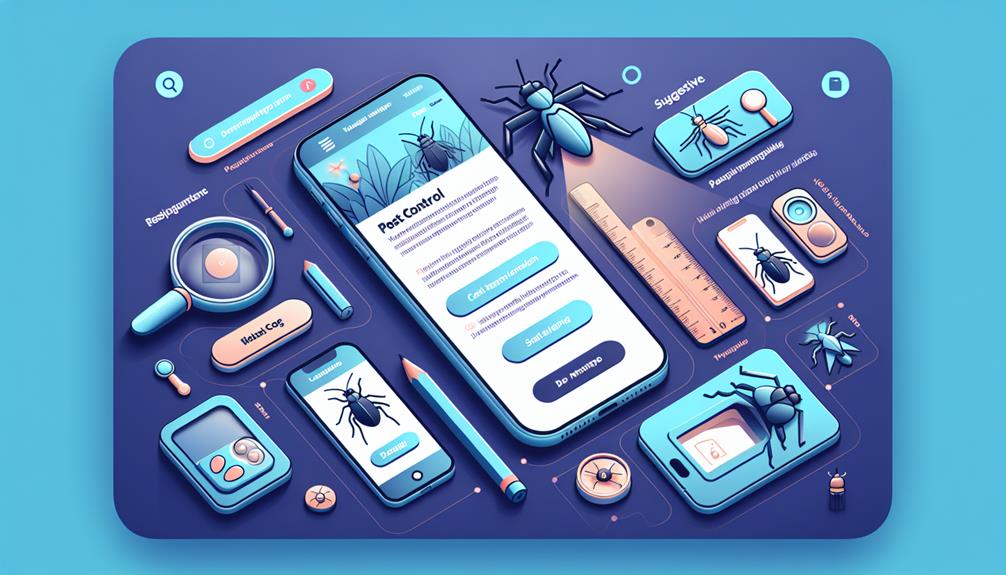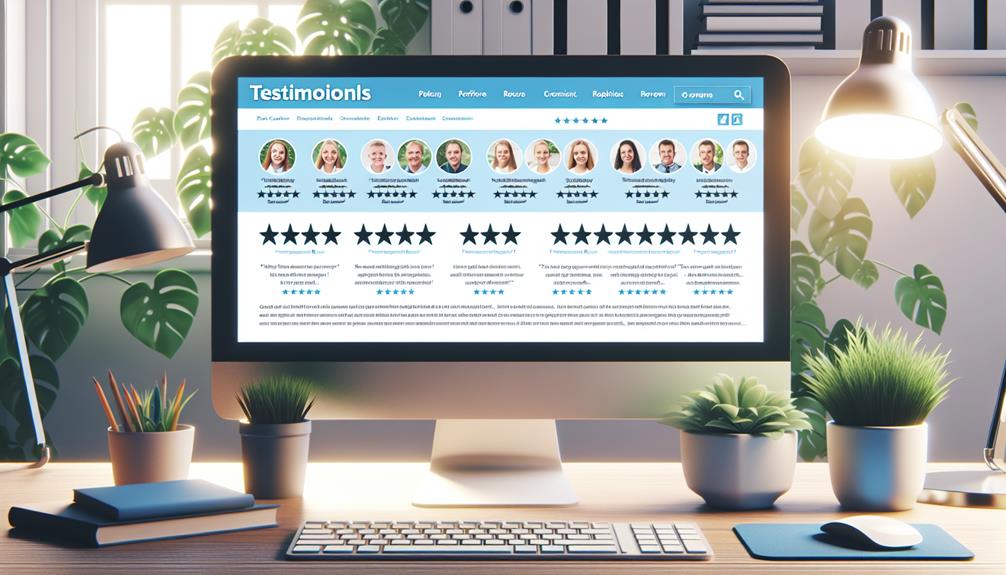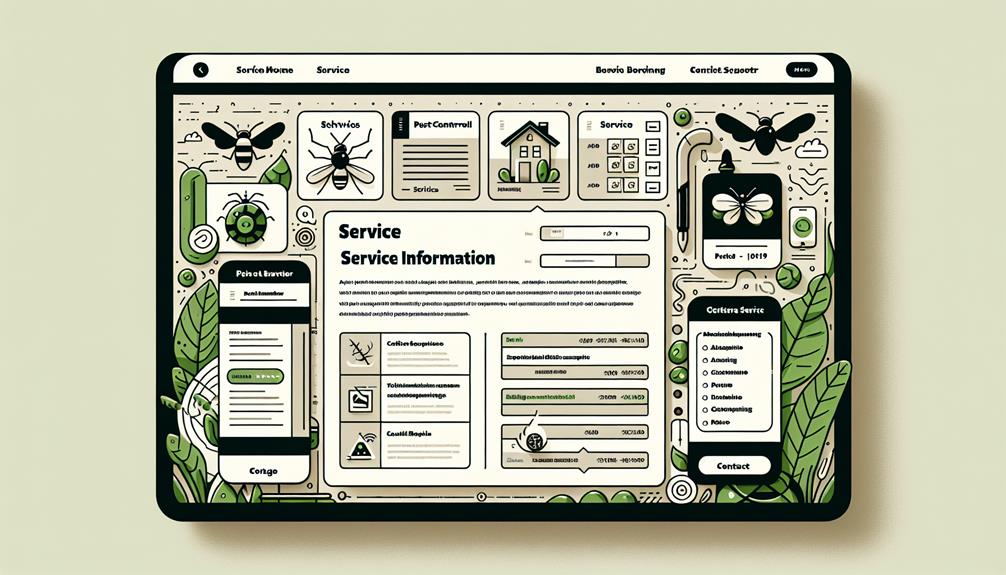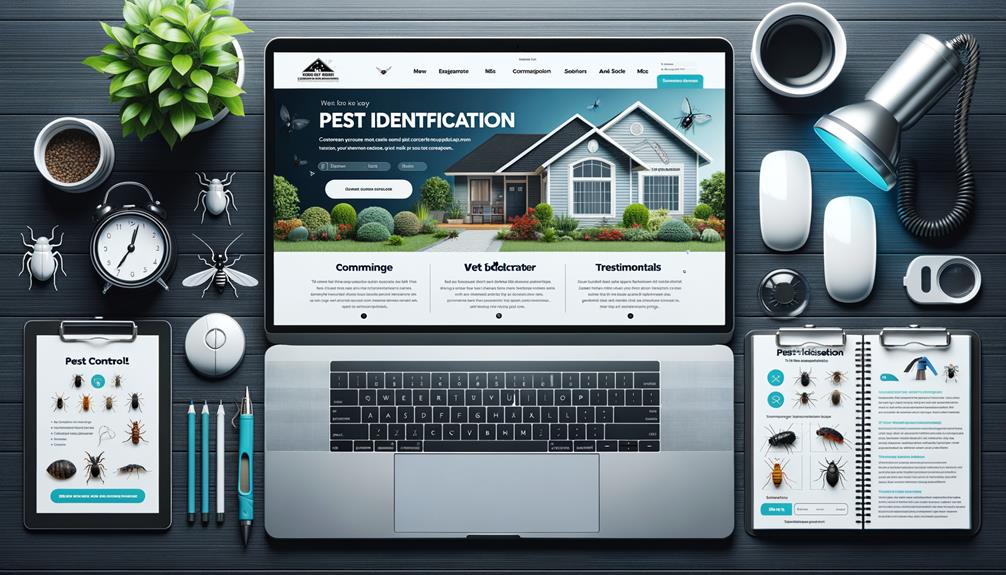Building a successful pest control website is like constructing a sturdy fortress to shield your business from the relentless invasion of competitors. In this digital age, your website is your first line of defense, and it needs to be equipped with the right tools and strategies to attract and convert potential customers.
But where do you start? Look no further, as we present to you 11 expert tips that will fortify your online presence and help you conquer the pest control market.
These invaluable insights will not only enhance the user experience but also boost your website’s visibility and credibility, ensuring that your business remains pest-free from the clutches of obscurity.
Table of Contents
ToggleKey Takeaways
- Prioritize a mobile-friendly design and responsive layout for your pest control website to improve user experience and search engine rankings.
- Use clear and intuitive navigation, including dropdown menus and a prominent search bar, to help users quickly find the information they need.
- Utilize eye-catching call-to-action buttons with compelling and action-oriented text to engage website visitors and encourage desired actions.
- Optimize website performance by focusing on fast loading speed, optimizing images and minimizing HTTP requests, and enabling browser caching. Regularly monitor and analyze your website’s performance using tools like Google Analytics.
Mobile-Friendly Design

To ensure the success of your pest control website, it’s crucial to prioritize a mobile-friendly design. With the increasing number of people accessing the internet through their smartphones and tablets, mobile optimization has become a necessity.
A responsive design allows your website to adapt to different screen sizes and resolutions, ensuring a seamless experience for your users.
Mobile optimization is important for several reasons. Firstly, it improves user experience by making your website easy to navigate and read on smaller screens. Visitors are more likely to stay and explore your site if they can easily access the information they need.
Secondly, a mobile-friendly design can positively impact your search engine rankings. Google has stated that mobile-friendliness is a ranking factor, meaning that responsive websites are more likely to appear higher in search results.
A well-designed mobile experience also contributes to your overall brand reputation. Users who’ve a positive experience on your mobile site are more likely to perceive your business as trustworthy and professional. On the other hand, a poorly optimized site can lead to frustration and a negative perception of your brand.
Clear and Intuitive Navigation
When it comes to your pest control website, clear and intuitive navigation is crucial for a positive user experience.
A user-friendly menu design and streamlined navigation options will help visitors easily find the information they need.
User-Friendly Menu Design
Creating a user-friendly menu design with clear and intuitive navigation is essential for a successful pest control website. An intuitive layout ensures that visitors can easily find the information they need, increasing their satisfaction and reducing bounce rates.
To achieve this, it’s crucial to prioritize effective categorization. Grouping related content under relevant headings and subheadings allows users to quickly locate the information they’re looking for. Consider using dropdown menus or expanding menus to further enhance the ease of navigation.
Additionally, make sure to include a search bar prominently on your website to give users a quick way to find specific information.
Streamlined Navigation Options
A streamlined navigation system is crucial for ensuring a clear and intuitive browsing experience on your pest control website. When it comes to mobile optimization and user experience, having a well-designed and user-friendly navigation menu is essential.
Here are three key elements to consider for streamlining your website’s navigation options:
- Clear and concise labels: Use descriptive labels that accurately represent each page or section of your website. Avoid using jargon or confusing terminology that may confuse users.
- Logical hierarchy: Organize your navigation menu in a logical and hierarchical manner, with the most important and frequently accessed pages at the top. This will help users quickly find what they’re looking for without having to dig through multiple layers of menus.
- Intuitive design: Ensure that your navigation menu is visually appealing and easy to use on both desktop and mobile devices. Use clear and recognizable icons or buttons, and consider implementing drop-down menus or breadcrumbs for deeper navigation.
Fast Loading Speed

To ensure the success of your pest control website, it’s crucial to focus on fast loading speed.
Optimal page load time is essential to provide a seamless user experience and keep visitors engaged.
Optimal Page Load Time
Achieving fast loading speed is crucial for the success of your pest control website. A slow loading website can frustrate visitors and lead to higher bounce rates. To improve website performance and optimize your website speed, consider the following tips:
- Optimize images: Compress and resize images to reduce their file size without compromising quality.
- Minimize HTTP requests: Reduce the number of requests by combining multiple CSS and JavaScript files into one.
- Enable browser caching: Set expiration dates for static resources to allow them to be stored in the visitor’s browser, reducing load time on subsequent visits.
Performance Optimization
Improving your website’s performance is crucial for ensuring fast loading speed and a seamless user experience. To achieve this, you need to focus on performance optimization.
One important aspect is performance tracking, which involves monitoring and analyzing your website’s speed, responsiveness, and overall performance. By using tools like Google Analytics, you can gather data on your website’s performance metrics and identify areas that need improvement.
Conversion optimization is another key factor in performance optimization. By optimizing your website for conversions, you can enhance the user experience and increase the likelihood of visitors taking desired actions, such as making a purchase or contacting your pest control business. This can be achieved through clear call-to-action buttons, simplified navigation, and optimized forms.
Eye-Catching Call-to-Action Buttons
Eye-catching call-to-action buttons are crucial for engaging website visitors and encouraging them to take desired actions. When it comes to conversion optimization and persuasive design, these buttons play a vital role in guiding users towards the next step.
Here are three key elements to consider when creating eye-catching call-to-action buttons:
- Color: Choose a color that stands out from the rest of the page, making it visually appealing and easy to locate. Use contrasting colors to make the button pop and grab the user’s attention.
- Placement: Position the call-to-action button in a prominent location, preferably above the fold, where users can easily see it without scrolling. Placing it near relevant content or information can also increase its effectiveness.
- Copy: Craft compelling and action-oriented text for the button. Use strong verbs that prompt users to take action, such as ‘Get Started,’ ‘Buy Now,’ or ‘Sign Up.’ Keep the text concise and clear, avoiding any ambiguity.
High-Quality Pest Control Images

To make your pest control website visually appealing, it’s crucial to choose high-quality images that have a strong visual impact. These images not only enhance the credibility of your business but also create engagement with your audience.
Captivating pest control photos can effectively convey the services you offer and make a lasting impression on potential customers.
Visual Impact: Choosing the Right Pest Control Images
Selecting high-quality pest control images is crucial for creating a visually impactful website. When it comes to enhancing user experience and capturing their attention, visual storytelling plays a vital role.
Here are three reasons why choosing the right pest control images is essential:
- Establish credibility: High-quality images showcase your professionalism and expertise in pest control. They build trust and confidence in potential customers, making them more likely to choose your services.
- Convey information effectively: Pest control images can visually communicate the types of pests you deal with, the solutions you offer, and the results you achieve. This helps users quickly understand your services and how you can solve their pest problems.
- Create emotional connection: By using compelling images, you can evoke emotions in your audience. Whether it’s the fear of pests or the relief of a pest-free environment, these emotions can motivate users to take action and contact your pest control business.
Enhancing Credibility: High-Quality Pest Control Visuals
Choosing high-quality pest control images is crucial in enhancing your website’s credibility and building trust with potential customers. When it comes to showcasing your pest control services, it’s important to invest in professional photographers who can capture the essence of your business.
Professional photographers have the skills and equipment to produce high-resolution images that highlight the effectiveness of your pest control solutions. These images can showcase your team in action, demonstrating your expertise and commitment to providing top-notch service.
Alternatively, you can also utilize stock images that are relevant to the pest control industry. However, be cautious when using stock images and ensure they accurately represent your business.
Creating Engagement: Captivating Pest Control Photos
Investing in captivating pest control photos is essential for creating engagement and visually showcasing the effectiveness of your services. When it comes to capturing the attention of your audience, high-quality images play a crucial role.
Here are three key reasons why captivating pest control photos are a must-have for your website:
- Captivating Photo Editing: Enhance the visual appeal of your pest control photos by investing in captivating photo editing techniques. This will make your images stand out and leave a lasting impression on your website visitors.
- Effective Image Placement: Place your captivating pest control photos strategically throughout your website. By incorporating them in relevant sections, such as service pages or testimonials, you can effectively showcase the benefits of your services.
- Engaging Visual Storytelling: Captivating pest control photos can tell a story and evoke emotions in your audience. Utilize images that capture the before and after results of your services or showcase the satisfaction of your customers to create engagement and build trust.
SEO-Optimized Content

To ensure the success of your pest control website, it’s essential to create SEO-optimized content that drives organic traffic and boosts your online visibility. Implementing effective SEO optimization techniques and employing smart keyword research strategies are key to achieving this goal.
When it comes to SEO optimization techniques, start by conducting thorough keyword research. Identify the keywords and phrases that potential customers are likely to use when searching for pest control services. Use these keywords strategically throughout your website content, including in the page titles, headings, meta descriptions, and body text. This will help search engines understand the relevance of your content and improve your website’s ranking in search results.
Additionally, make sure to create high-quality, informative, and engaging content that provides value to your audience. This not only helps improve your website’s search engine ranking but also encourages visitors to stay on your site longer and increases the likelihood of conversions.
Regularly updating your content with fresh information and staying up-to-date with the latest SEO trends and best practices is also crucial. This ensures that your website remains relevant and competitive in the ever-evolving online landscape.
User-Friendly Contact Forms
Creating user-friendly contact forms is crucial for maximizing conversions and making it easy for potential customers to get in touch with your pest control business. A poorly designed contact form can lead to frustration and ultimately deter users from reaching out. To optimize your contact form and enhance the user experience, consider the following tips:
- Keep it simple: Design a clean and straightforward form that’s easy to navigate. Avoid overwhelming users with unnecessary fields or complex layouts.
- Be mobile-friendly: With the increasing use of smartphones, it’s essential to ensure that your contact form is fully responsive and functions well on mobile devices. Test it on different screen sizes to guarantee a seamless experience.
- Provide clear instructions: Include clear and concise instructions to guide users through the form-filling process. This will help to minimize confusion and errors.
Testimonials and Reviews

Testimonials and reviews play a crucial role in establishing trust and credibility for your pest control business. Potential customers often rely on the experiences of others to make informed decisions. By showcasing positive testimonials and reviews on your website, you can effectively demonstrate the effectiveness of your services and build confidence in your brand.
When it comes to testimonial effectiveness, quality matters more than quantity. Choose testimonials that highlight specific benefits and outcomes that your customers have experienced. This will provide potential customers with tangible evidence of your expertise and the value you bring.
In order to effectively manage reviews, it’s important to actively monitor and respond to them. Responding to positive reviews shows appreciation for your customers’ feedback and helps to strengthen the customer-business relationship. Addressing negative reviews promptly and professionally demonstrates your commitment to resolving issues and providing exceptional service.
To encourage customers to leave reviews, make the process as simple as possible. Consider integrating review platforms, such as Google or Yelp, into your website so customers can easily leave feedback. Additionally, you can request reviews through email campaigns or by including a review reminder in your post-service follow-up communication.
Social Media Integration
Integrate your social media platforms seamlessly into your pest control website to expand your online presence and engage with potential customers.
Social media integration is crucial in today’s digital age, as it allows you to leverage the power of social media marketing and advertising to reach a wider audience.
Here are three key benefits of integrating social media into your pest control website:
- Increased visibility: By incorporating social media buttons or widgets on your website, you make it easy for visitors to connect with your brand across different platforms. This not only helps to increase your online visibility but also encourages users to follow and engage with your social media accounts.
- Enhanced customer engagement: Social media integration allows you to interact with your audience in real-time. You can respond to customer queries, provide updates, and share valuable content, fostering a sense of community and building trust with your potential customers.
- Amplified reach through social sharing: When visitors find your website content valuable, they’re more likely to share it on their own social media profiles. This organic sharing can significantly expand your reach and attract new customers who may not have discovered your pest control services otherwise.
Easy-to-Find Service Information

To ensure easy access to important information, make sure your pest control website prominently displays your services. This means that when potential customers land on your website, they should be able to quickly and easily find details about the services you offer. One way to achieve this is by having a dedicated services page that lists all the different types of pest control services you provide. This page should include a brief description of each service, as well as any relevant service pricing information.
In addition to a dedicated services page, it’s also beneficial to have service information displayed prominently on your homepage. This can be done through the use of clear and concise service descriptions, accompanied by eye-catching graphics or icons. By making your service information easily accessible, you’re providing potential customers with the information they need to make an informed decision about whether or not to hire your pest control services.
Another effective way to showcase the quality of your services is by including customer testimonials on your website. These testimonials provide social proof and demonstrate that you have a track record of satisfied customers. Include testimonials from a variety of sources, such as homeowners, property managers, or commercial clients. By prominently displaying customer testimonials, you’re building trust and credibility with potential customers, increasing the likelihood that they’ll choose your pest control services over your competitors.
SSL Certificate and Website Security
Ensuring the security of your pest control website is crucial, and one way to achieve this is by obtaining an SSL certificate. An SSL certificate, short for Secure Sockets Layer, is a digital certificate that provides website encryption and data protection.
Here are three reasons why having an SSL certificate is essential for your pest control website:
- Enhanced Website Security: With an SSL certificate, all communication between your website and visitors is encrypted, making it difficult for hackers to intercept and access sensitive information.
- Improved Trust and Credibility: When visitors see the padlock icon or HTTPS in the URL bar, they know that your website is secure. This creates a sense of trust and confidence in your brand, leading to more conversions and customer loyalty.
- Better SEO Ranking: Search engines like Google prioritize secure websites in their search results. Having an SSL certificate can boost your website’s visibility and improve your chances of ranking higher, ultimately driving more organic traffic to your pest control website.





